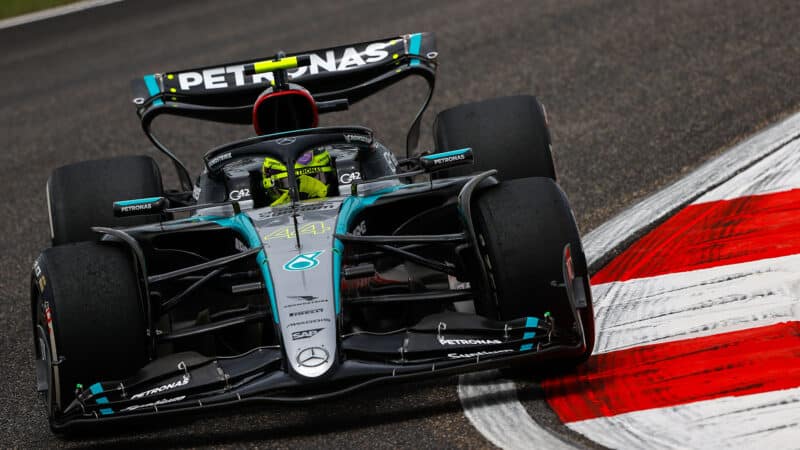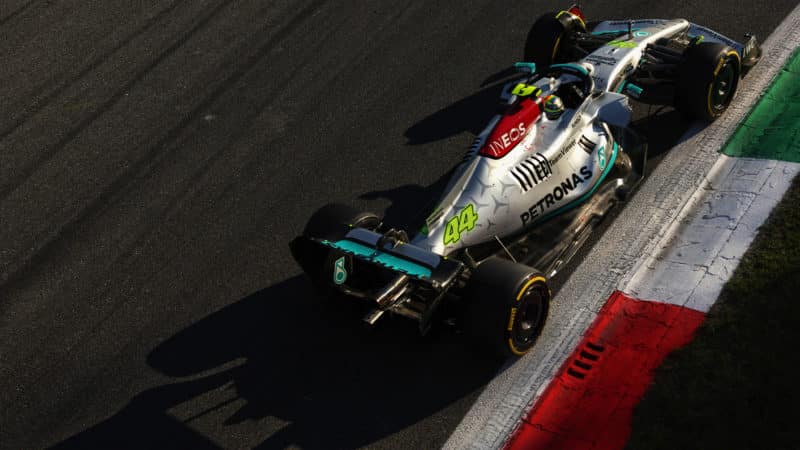Mercedes: ‘We were too confident after eight years of F1 success’
Mercedes' return to competitiveness has been a hard and gruelling journey. Key figures from the team tell Motor Sport what went wrong and how it clawed its way back to the front

It has taken two and a half painful years for Mercedes to return to the front
Mercedes
Mercedes goes into the Hungarian Grand Prix in search of its third grand prix win in a row. And that’s not a sentence anybody thought they would be reading at the start of the season.
The team that delivered eight consecutive constructors’ championships between 2014 and 2021 suffered a humiliating slump when new regulations were introduced in 2022.
Its ‘zero sidepod’ concept was hailed as innovative before it quickly became clear that the reigning champions had got the new car very wrong.
Only now, two-and-a-half years later, having eventually abandoned the distinctive design, has the Brackley-based team returned itself to victory contention.
In the August 2024 issue of Motor Sport, available now, Andrew Benson, the BBC’s Formula 1 correspondent, charts the team’s gruelling recovery, during which Lewis Hamilton has announced his future departure, having endured — along with George Russell — a car that was unable to showcase his talent.
Technical director James Allison said the problem was more fundamental than the design of the 2022 car itself, as the team continued with the formula that had brought it so much success previously.
“The most significant thing is not technical but cultural, really,” he says. “That these rules require different things from an organisation than the old rules did, and eight years of consistent success as a group probably led us to be a bit too confident that the way in which we were working would always get the best out of the resource we were spending.
“We were slow to recognise the fact that the new regulations actually require a different set of skills and a different way of interacting with each other. And when I talk about interacting, I mean the main blocks of the company. So the aerodynamic guys with the vehicle dynamics guys, with the track guys, with the drawing office guys. All of them have always had to interact because you couldn’t do an F1 car without. But the extent to which they need to be in each other’s pockets with these new rules is quite different to the extent to which they had to be in each other’s pockets previously, driven largely by the fact that the cars are so near the ground that the suspension and aerodynamics are closer than blood brothers and need to be designed with the greatest of sympathy to each other.”
Allison continues: “We carried on for far too long with the more relaxed interactions that had served us brilliantly well under the old set of rules and were slow to recognise the need for us to tighten our act up.”
“If your organisation is not set up to deliver a nice trusty path to greater competitiveness then you can talk all day about the geometry of the car; it will matter not one jot.”

Zero-sidepod concept was ambitious but didn’t work
LAT via Mercedes-AMG
Having dropped behind Red Bull and Ferrari in 2022, with little sign of consistent performance, there was some surprise that the zero sidepod concept returned for 2023.
But behind the scenes, the team’s structure was changing, and by Monaco, the car had adopted a more conventional design. Allison tells Motor Sport says that the changes may have made the car slower in 2023, but it set the foundations for a more competitive 2024.
Even so, the season began with more struggles, as Mercedes couldn’t achieve a balance in high- and low-speed corners in the 2024 car, based around a new concept.
A series of upgrades was needed to eliminate the flaw. The car has now gone from 0.688sec on average off pole position in the first five races to 0.266sec off in the second five. It has also reduced the gap to Ferrari from 0.322sec to 0.049sec, resulting in victories for both Russell and Hamilton in Austria and Britain.
“It has been a painful learning curve and it is still not satisfactory, but the situation is more encouraging,” says team principal Toto Wolff. “We are on a trajectory where we are making the car better. I feel more confident now.
“We could have done things better and differently and spotted things earlier and optimised within the organisation, and we didn’t.”
Read the full article in the August 2024 issue of Motor Sport.
